Is your AI development stuck in low gear?
You’re balancing complex frameworks and platforms, trying to find the right fit without wasting precious time or budget on the wrong choice.
The fear of choosing a tool that fails to scale or integrate properly is paralyzing. It’s a huge waste of investment and effort.
Baytech Consulting reports that despite widespread AI adoption, only 1% of companies achieve AI maturity. This gap often comes down to using inefficient tools.
But the right software can change this. It will help you accelerate your entire AI workflow from prototyping to deployment, without the guesswork.
In this guide, I’ll walk you through my picks for the best deep learning software of 2025. I’m focusing on tools that solve these exact development bottlenecks.
You’ll discover platforms that simplify distributed training, integrate with your pipelines, and boost your team’s productivity, helping you achieve real AI maturity.
Let’s get started.
Quick Summary:
| # | Software | Rating | Best For |
|---|---|---|---|
| 1 | TensorFlow → | Data scientists & ML engineers | |
| 2 | PyTorch → | Research & production teams | |
| 3 | H2O.ai → | Enterprise data scientists | |
| 4 | DataRobot → | Businesses seeking scale & governance | |
| 5 | MathWorks → | Enterprise-grade AI development |
1. TensorFlow
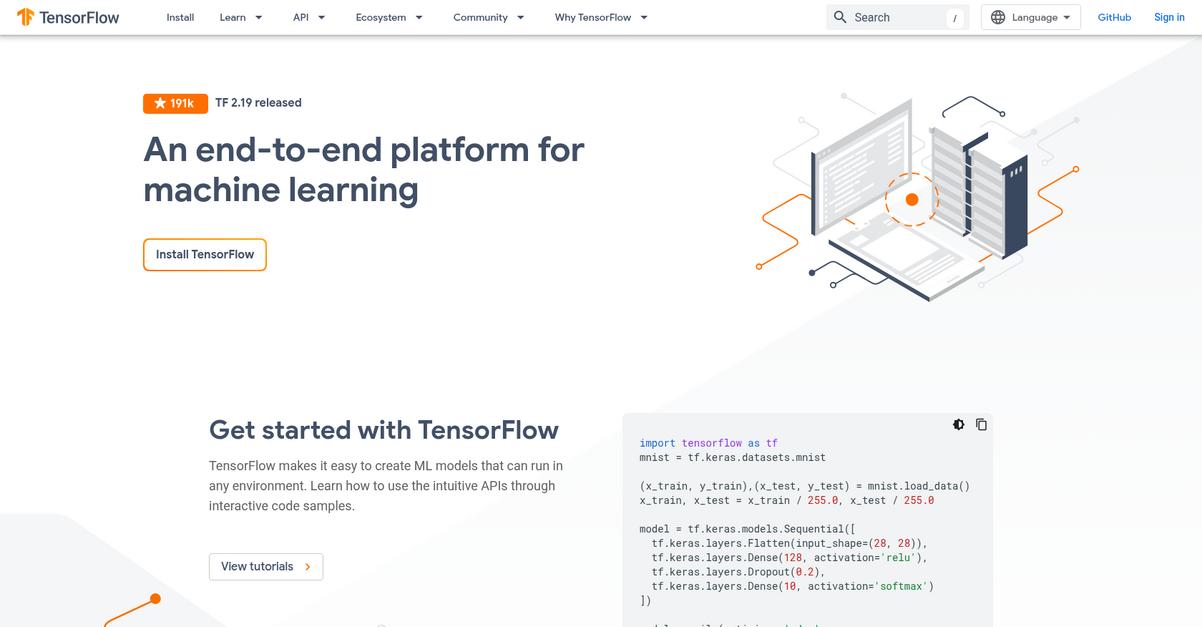
Struggling with complex deep learning software evaluations?
TensorFlow provides an end-to-end platform making it easier to create and deploy ML models across various environments.
This means you can accelerate model prototyping and simplify distributed training without getting bogged down in intricate setup or integration issues.
Here’s how to overcome deep learning challenges.
TensorFlow solves your problem by offering intuitive APIs and comprehensive tutorials, streamlining your ML development from start to finish.
Its extensive ecosystem includes TensorFlow.js for web ML and TensorFlow Lite for mobile and edge devices, ensuring broad deployment capabilities for your AI applications. Additionally, tools like TFX help you build robust production ML pipelines and implement MLOps best practices, while TensorBoard aids in visualizing and tracking model development effectively.
This diverse toolkit means you can focus on innovation, integrating seamlessly with your existing CI/CD pipelines, and minimizing operational overhead.
Accelerate your AI development with ease.
While we’re discussing AI tools, understanding SaaS billing software is equally important for businesses.
Key features:
- Intuitive APIs and Tutorials: Quickly create ML models and learn through interactive code samples, significantly reducing your learning curve and speeding up initial development.
- Broad Deployment Ecosystem: Develop for web with TensorFlow.js, deploy on mobile and edge devices using TensorFlow Lite, and build production pipelines with TFX.
- Comprehensive Tools & Resources: Access pre-trained models, datasets, and development tools like TensorBoard for efficient model optimization, tracking, and workflow acceleration.
Learn more about TensorFlow features, pricing, & alternatives →
Verdict: TensorFlow offers a robust, end-to-end platform that accelerates model prototyping and simplifies distributed training. Its intuitive APIs, broad deployment ecosystem, and comprehensive tools make it a compelling choice for data scientists and ML engineers seeking the best deep learning software to accelerate their AI development in 2025.
2. PyTorch
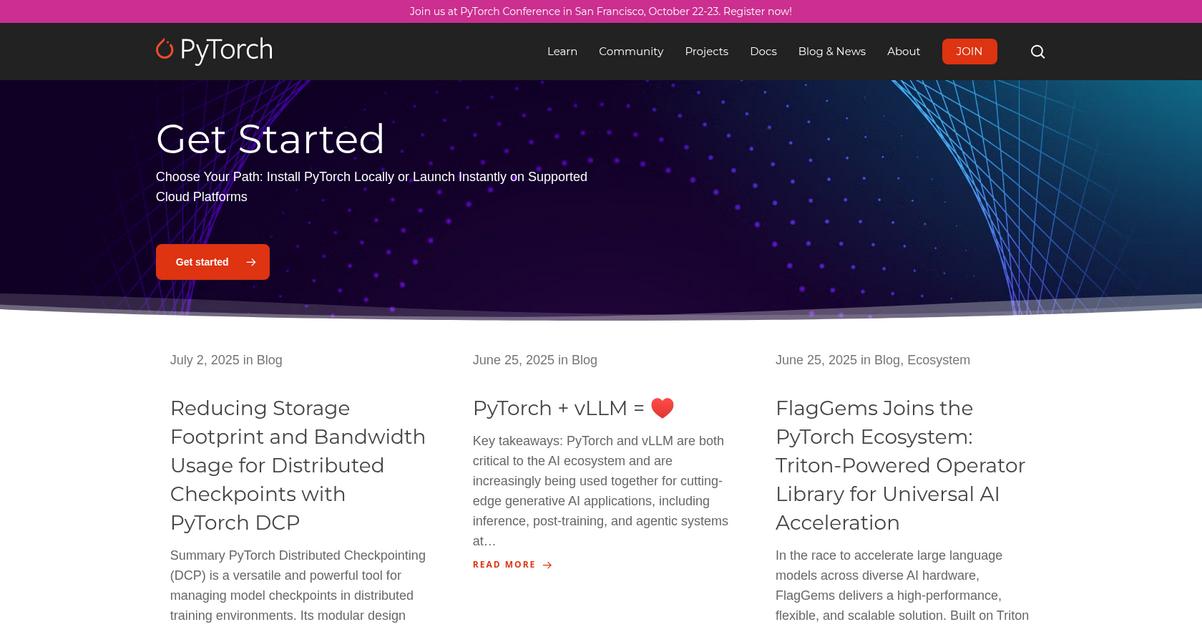
Struggling with complex deep learning software evaluations?
PyTorch simplifies your deep learning journey, letting you install locally or instantly launch on supported cloud platforms. This means you can quickly get started without extensive setup.
This immediate accessibility helps your team avoid common integration headaches, accelerating your model prototyping and minimizing wasted time trying to get frameworks to play nice. The result?
A clear path to production.
PyTorch helps solve your complex deep learning challenges by offering seamless transitions between eager and graph modes with TorchScript. This allows for flexible development, whether you’re exploring new ideas or optimizing for deployment.
You can also leverage its scalable distributed training and performance optimization in both research and production settings, powered by the torch.distributed backend. This capability ensures your projects scale effortlessly, addressing common bottlenecks in large-scale AI development. Plus, PyTorch is fully supported on major cloud platforms like AWS, Google Cloud, and Azure, providing frictionless development and easy scaling of your AI infrastructure for computer vision and NLP tasks.
Your AI development can truly accelerate.
While we’re discussing software for accelerating development, my article on job evaluation software also offers insights for building a strong team.
Key features:
- Production Ready: Easily move from development to deployment with TorchScript and TorchServe, accelerating your applications to production environments.
- Distributed Training: Scale your AI models efficiently across multiple computing resources, optimizing performance for complex and large-scale deep learning projects.
- Robust Ecosystem: Access a rich collection of tools and libraries that extend PyTorch’s capabilities, supporting specialized development in areas like computer vision and NLP.
Learn more about PyTorch features, pricing, & alternatives →
Verdict: PyTorch empowers your team to accelerate AI development by providing production-ready features, scalable distributed training, and extensive cloud support. Its robust ecosystem makes it a compelling contender for the best deep learning software, streamlining your workflow and addressing critical pain points.
3. H2O.ai

Struggling with deep learning software complexity?
H2O.ai offers an end-to-end Generative AI platform, helping your team overcome integration challenges and accelerate AI development. This means you can own your data and prompts, ensuring security and control throughout your projects.
The platform addresses your pain points by supporting air-gapped, on-premises, or cloud VPC deployments, providing the flexibility you need for your existing ML pipelines. This approach is perfect for data scientists and ML engineers seeking robust, scalable solutions.
Ready to simplify your AI journey?
H2O.ai’s tools like H2O LLM Studio enable no-code fine-tuning for custom enterprise-grade LLMs, allowing you to train scalable SLMs for more efficient NLP use cases. Additionally, with H2OVL Mississippi, you get open-weight small vision-language models perfect for OCR and Document AI, showcasing exceptional text recognition capabilities. The platform further boosts compliance and risk control through H2O Model Validation for LLMs, featuring automated testing, bias detection, and explainability. Plus, you can connect any LLM/embedding model, fully scalable with Kubernetes, complete with cost controls.
The result is accelerated model prototyping and simplified distributed training.
Key features:
- End-to-end GenAI platform: Provides a comprehensive suite for Generative AI, supporting air-gapped, on-premises, or cloud VPC deployments to fit your infrastructure needs and maintain data ownership.
- No-code LLM fine-tuning: H2O LLM Studio enables efficient, no-code fine-tuning for custom enterprise-grade Large Language Models, allowing your team to quickly deploy scalable SLMs for NLP.
- Robust model validation: Includes an evaluation framework with automated testing, human calibration, bias detection, and explainability to boost compliance and risk control for GenAI models.
Learn more about H2O.ai features, pricing, & alternatives →
Verdict: H2O.ai offers a comprehensive platform specifically designed to mitigate the complexity data scientists and ML engineers face, making it the best deep learning software for enterprise AI. Its focus on security, compliance, and flexible deployment options like on-premises or cloud, coupled with powerful features for model validation and fine-tuning, directly addresses critical pain points in AI development.
4. DataRobot

Struggling with deep learning software complexity and deployment?
DataRobot offers an Enterprise AI Suite, including AI Apps & Agents, to drive innovation and scale effortlessly.
This means you can easily integrate AI into your existing business processes, avoiding common risks with built-in governance guardrails.
Here’s how DataRobot helps.
DataRobot delivers an industry-leading agentic AI platform to maximize impact and minimize risk for your business. It allows your teams to build, operate, and govern AI at scale, whether it’s Agentic, Generative, or Predictive AI.
You get comprehensive AI Governance and AI Observability capabilities, helping you infuse AI into your existing business processes. This platform is specifically engineered to deliver meaningful impact across departments and industries, from Finance to Manufacturing. Additionally, DataRobot offers open-source tools like Covalent and Syftr, enabling you to programmatically find and tune agentic workflows, empowering your AI teams with built-in collaboration and orchestration features.
The result is faster deployments and secured AI outcomes.
Key features:
- Enterprise AI Suite: This provides AI Apps & Agents engineered to drive innovation, scale effortlessly, and deliver meaningful impact across diverse departments and industries.
- Comprehensive AI Platform: Offers Agentic, Generative, and Predictive AI capabilities, integrated with robust AI Governance and AI Observability to ensure secure and scalable AI deployment.
- Open Source Tools and Integrations: Includes Covalent and Syftr for programmatic workflow tuning, alongside extensive integrations into your core business processes and AI infrastructure.
Learn more about DataRobot features, pricing, & alternatives →
Verdict: DataRobot’s comprehensive AI suite, with its focus on agentic AI, governance, and seamless integration, positions it as the best deep learning software for businesses seeking to maximize impact and minimize risk. Their platform empowers your AI teams to develop, deliver, and govern AI at scale, evidenced by over 38K customer deployments and 1.4B AI calls secured daily.
5. MathWorks
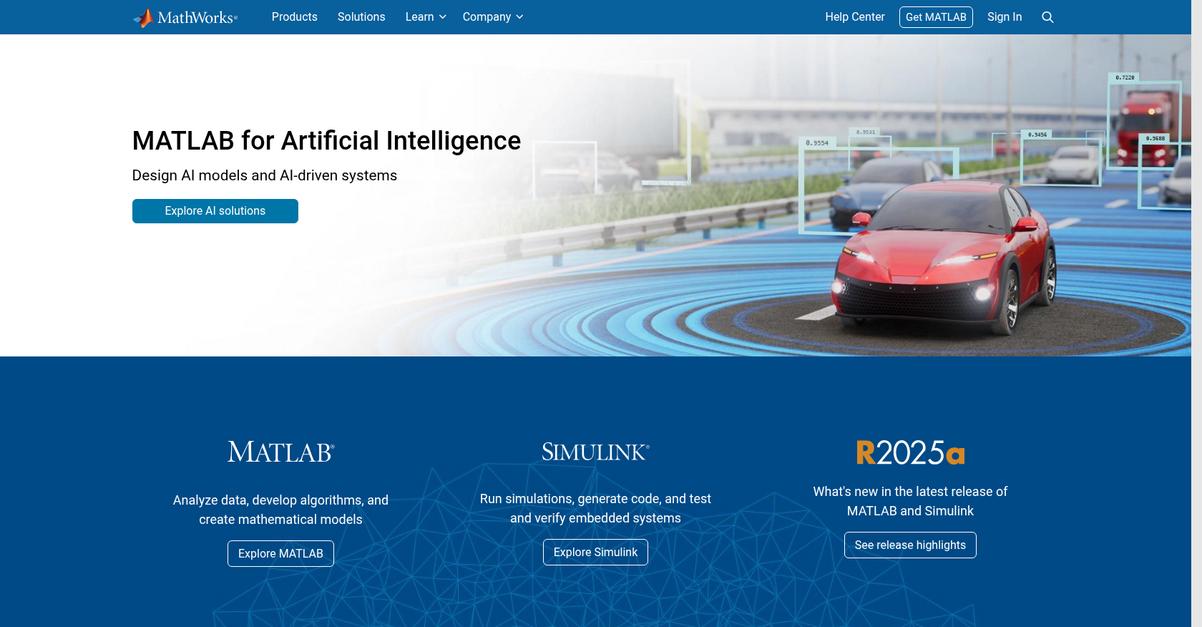
Struggling with deep learning model development complexity?
MathWorks offers specialized AI solutions to design AI models and AI-driven systems. This means you can streamline your process for better outcomes.
You’ll find it helps to analyze data, develop algorithms, and create mathematical models. This helps overcome the headaches of balancing various framework needs.
Here’s how to simplify your AI development.
MathWorks provides MATLAB, a powerful tool to analyze data, develop algorithms, and create mathematical models. Plus, Simulink helps you run simulations, generate code, and test and verify embedded systems.
This allows for systematic use of models throughout your development process, whether you’re working on robotics, electrification, or autonomous systems. It directly addresses the challenge of integrating complex workflows and helps ensure your AI projects are robust and perform as expected. Additionally, you can stay updated with the latest release highlights, ensuring your projects always benefit from cutting-edge features.
It’s all about accelerating your AI development.
Before diving deeper into AI, you might find my analysis of microfinance banking software helpful for financial operations.
Key features:
- AI Model Design: Design and develop AI models and AI-driven systems, streamlining complex deep learning workflows.
- Data Analysis & Algorithm Development: Analyze data, develop algorithms, and create mathematical models for robust AI solutions with MATLAB.
- System Simulation & Verification: Run simulations, generate code, and test and verify embedded systems, crucial for robotics and electrification applications.
Learn more about MathWorks features, pricing, & alternatives →
Verdict: MathWorks provides comprehensive tools like MATLAB and Simulink, empowering you to design AI models, analyze data, and simulate complex systems. This integrated approach simplifies distributed training and testing, making it an excellent choice if you’re seeking the best deep learning software for enterprise-grade AI development.
6. SAS
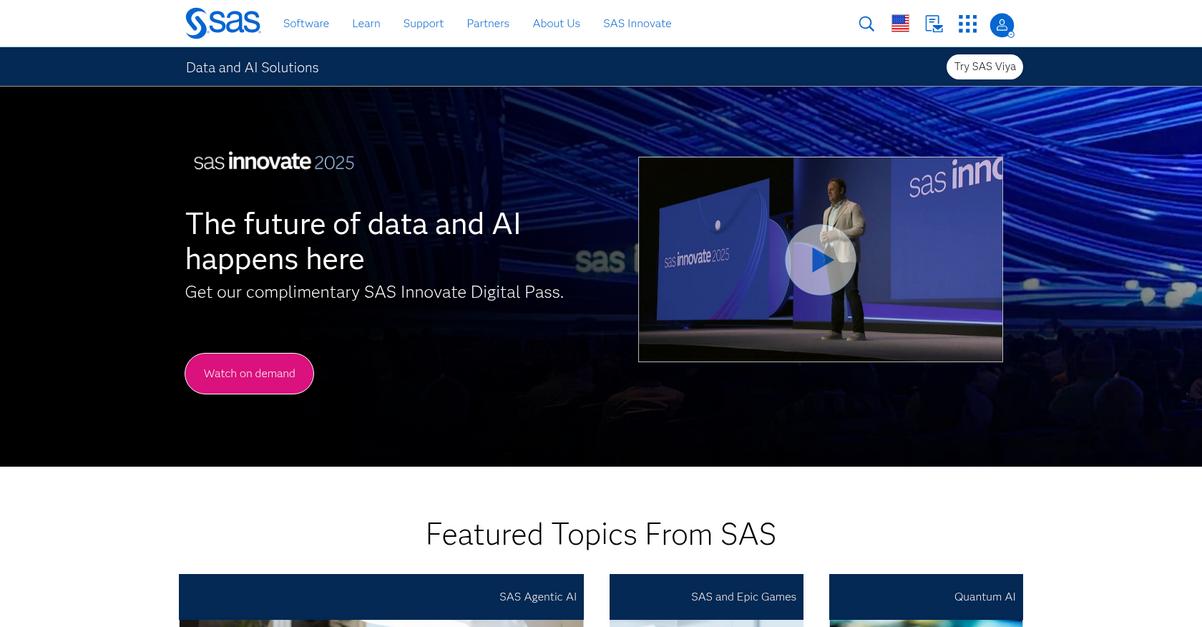
Struggling with complex deep learning software decisions?
SAS offers a powerful suite of analytics solutions designed to simplify your AI development. This means you can focus on innovation, not infrastructure.
Your team can leverage its advanced analytical capabilities for real-world problems. This directly addresses the pain point of overwhelming software complexity.
Here’s how SAS helps.
SAS integrates advanced analytics, machine learning, and deep learning into a unified platform. You get comprehensive tools to tackle everything from data preparation to model deployment, helping you to accelerate your AI workflows.
Additionally, it provides robust support for critical deep learning tasks like computer vision and natural language processing. This allows your team to prototype models faster, simplify distributed training, and integrate seamlessly with existing pipelines, minimizing operational overhead. Plus, it offers enterprise-grade support and security features.
The result is accelerated AI development.
Before diving deeper into SAS, you might find my analysis of printing & packaging industry software helpful if you’re looking for specialized solutions.
Key features:
- Unified AI Platform: Provides a comprehensive environment for analytics, machine learning, and deep learning, streamlining your entire AI development lifecycle from data to deployment.
- Advanced Analytics Capabilities: Equips you with powerful tools for tackling complex real-world problems, enhancing model accuracy and performance across various deep learning tasks.
- Enterprise-Grade Support: Offers robust security features and dedicated enterprise support, ensuring reliability, compliance, and peace of mind for your critical AI initiatives.
Learn more about SAS features, pricing, & alternatives →
Verdict: SAS stands out as an excellent choice for best deep learning software, providing advanced analytical capabilities and robust enterprise support to simplify complex AI development. It helps your team accelerate model prototyping and integrate seamlessly with existing pipelines.
7. Alteryx

Struggling with overwhelming deep learning software complexity?
Alteryx offers a unified platform designed to build, scale, and govern analytics, directly addressing your integration and scalability pain points.
This means you can accelerate decisions and automate insights at any scale, without grappling with fragmented tools or complex coding.
You can move faster from data to decisions.
Alteryx One empowers your team to turn data into action with AI-powered workflows and self-service analytics, driving smarter decisions at scale. Plus, you get an AI Data Clearinghouse that governs, contextualizes, and orchestrates your enterprise data for any LLM, making outputs explainable, compliant, and accurate. Additionally, its drag-and-drop interface and AI-guided data automation allows anyone to analyze, discover, and share insights, eliminating repetitive work and manual errors. This helps your team spend less time wrangling data and more time driving value.
The result? Unlocking hidden insights in your data.
Key features:
- Unified Analytics Platform: Build, scale, and govern analytics in a single environment, centralizing your AI development efforts and minimizing operational overhead.
- AI-Powered Workflows: Accelerate model prototyping and simplify distributed training with Generative AI tools and an AI-powered analytics assistant.
- Trusted Data Governance: Prepare high-quality, AI-ready data with a multi-layered governance framework, ensuring compliance and explainable AI outputs.
Learn more about Alteryx features, pricing, & alternatives →
Verdict: Alteryx offers a unified, AI-powered platform for data analytics that addresses the core challenges of deep learning professionals. Its focus on AI-ready data, governance, and automated workflows, as evidenced by users saving 25,000 hours, makes it suitable as a top best deep learning software choice for accelerating your AI development.
8. KNIME
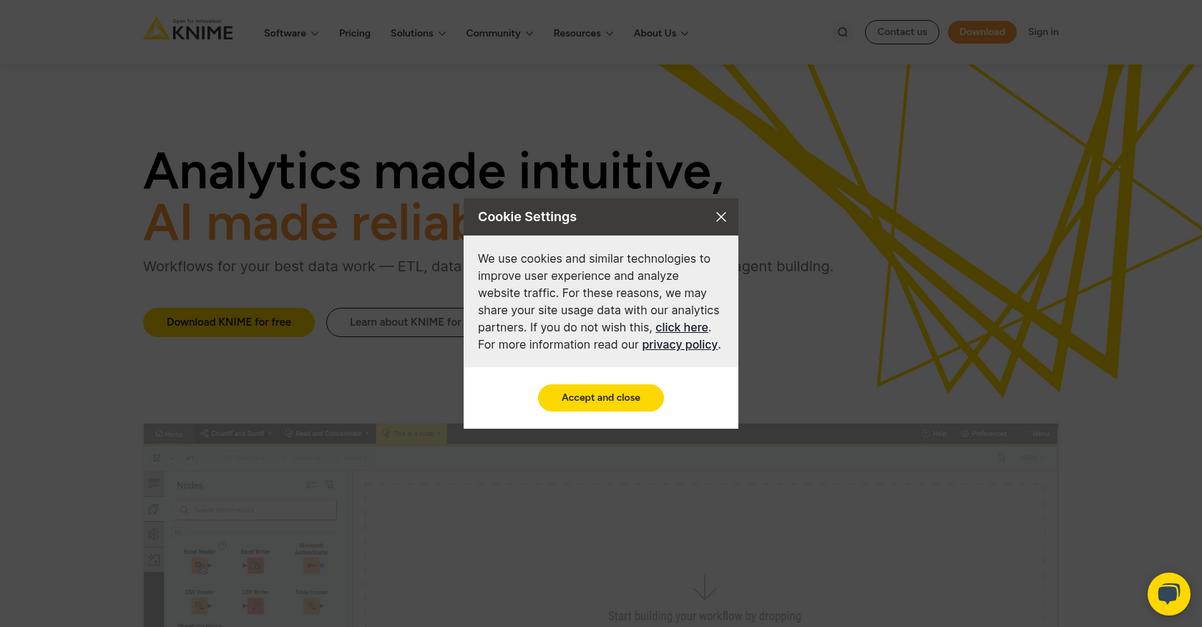
Struggling to navigate complex deep learning software choices?
I understand the struggle of evaluating deep learning tools, balancing scalability with budget. KNIME offers visual workflows that make complex data and AI work intuitive.
This means you can harness the latest data technology without extensive coding. It simplifies everything from ETL to advanced AI model deployment.
Here’s a simpler approach.
KNIME provides a single platform for end-to-end data science, which helps you create and productionize AI solutions safely. You can blend and transform data from any source using over 300 connectors.
Additionally, you choose from a complete range of analytic and AI methods to model and visualize your findings effectively. This includes everything from deep learning to generative AI, making advanced analysis accessible. Plus, you can securely deploy and monitor your data science solutions with a standardized process, scaling flexibly on-premise or in the cloud, all while ensuring data security and governance in a centralized platform.
The result: reliable AI, made intuitive.
Speaking of harmonizing your tech stack, my guide on ecommerce integration platform might also be helpful.
Key features:
- Visual Workflow Interface: Empowers business analysts and data scientists alike to perform complex data and AI tasks through an intuitive drag-and-drop interface.
- End-to-End Data Science Platform: Offers a single platform for data blending, transformation, modeling, visualization, deployment, and monitoring of AI solutions.
- Extensive Integration and Customization: Provides over 300 connectors for various data types and sources, with an open ecosystem allowing integration with popular AI/ML libraries.
Learn more about KNIME features, pricing, & alternatives →
Verdict: KNIME is an excellent choice for anyone seeking the best deep learning software, whether you’re a beginner or an expert. Its visual workflows simplify complex AI development, allowing you to deploy and monitor models securely across your organization, making advanced analytics accessible for all.
Conclusion
Picking the right AI tool is hard.
You’re juggling complex frameworks, trying to find a scalable solution that fits your pipeline without a costly, dead-end investment.
Baytech Consulting reports that 71% of organizations now use generative AI. With AI adoption more than doubling, the pressure to choose the right tools to stay competitive is absolutely immense.
So, what’s my top pick?
From my direct experience, TensorFlow is the clear winner. It directly tackles the challenge of accelerating development while simplifying complex model deployment for your team.
Its end-to-end platform truly shines, helping you prototype models faster and build robust production ML pipelines. I believe it’s the best deep learning software for achieving real results.
Speaking of finding the right software, my guide on best vendors management software can help you streamline your selection process.
I recommend you install TensorFlow today and explore its extensive ecosystem. Its resources can streamline your workflow from start to finish.
Your entire AI workflow will accelerate.






